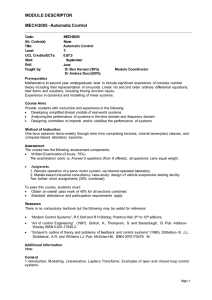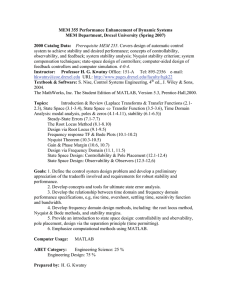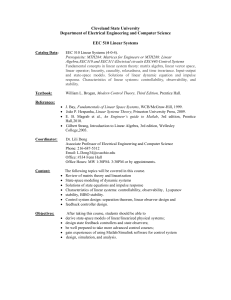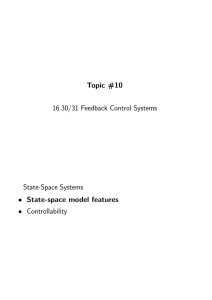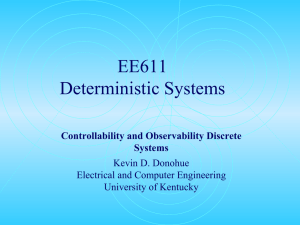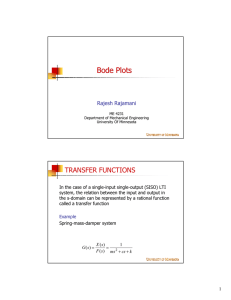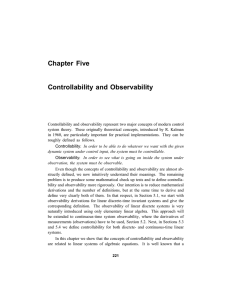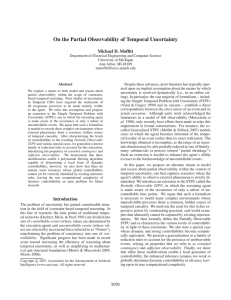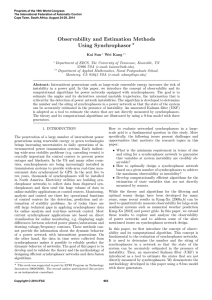Mechanical Engineering and Mechanics MEM 255 Introduction to Controls
advertisement
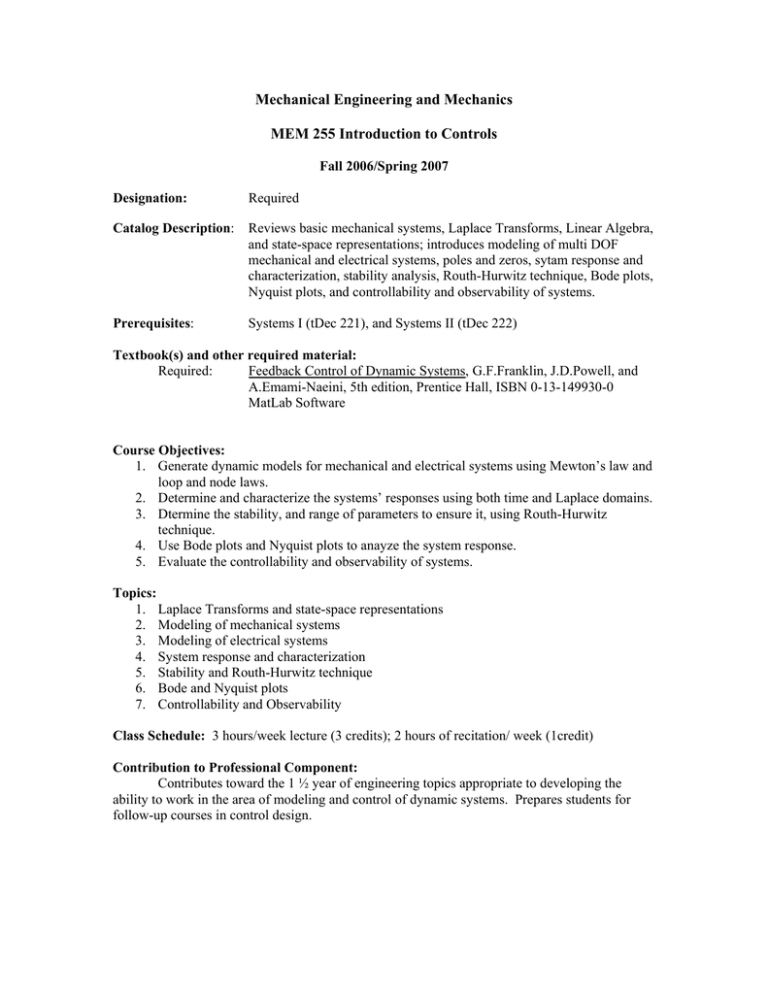
Mechanical Engineering and Mechanics MEM 255 Introduction to Controls Fall 2006/Spring 2007 Designation: Required Catalog Description: Reviews basic mechanical systems, Laplace Transforms, Linear Algebra, and state-space representations; introduces modeling of multi DOF mechanical and electrical systems, poles and zeros, sytam response and characterization, stability analysis, Routh-Hurwitz technique, Bode plots, Nyquist plots, and controllability and observability of systems. Prerequisites: Systems I (tDec 221), and Systems II (tDec 222) Textbook(s) and other required material: Required: Feedback Control of Dynamic Systems, G.F.Franklin, J.D.Powell, and A.Emami-Naeini, 5th edition, Prentice Hall, ISBN 0-13-149930-0 MatLab Software Course Objectives: 1. Generate dynamic models for mechanical and electrical systems using Mewton’s law and loop and node laws. 2. Determine and characterize the systems’ responses using both time and Laplace domains. 3. Dtermine the stability, and range of parameters to ensure it, using Routh-Hurwitz technique. 4. Use Bode plots and Nyquist plots to anayze the system response. 5. Evaluate the controllability and observability of systems. Topics: 1. Laplace Transforms and state-space representations 2. Modeling of mechanical systems 3. Modeling of electrical systems 4. System response and characterization 5. Stability and Routh-Hurwitz technique 6. Bode and Nyquist plots 7. Controllability and Observability Class Schedule: 3 hours/week lecture (3 credits); 2 hours of recitation/ week (1credit) Contribution to Professional Component: Contributes toward the 1 ½ year of engineering topics appropriate to developing the ability to work in the area of modeling and control of dynamic systems. Prepares students for follow-up courses in control design. Relationship to Program Outcomes: Outcomes a - k a. An ability to apply knowledge of mathematics, science and engineering b. An ability to design and conduct experiments as well as to analyze and interpret data c. An ability to design a system, component or process to meet desired needs d. An ability to function on multidisciplinary teams e. An ability to identify, formulate and solve engineering problems f. An understanding of professional and ethical responsibility g. An ability to communicate effectively h. The broad education necessary to understand the impact of engineering solutions in a global/societal context i. A recognition of the need for and an ability to engage in lifelong learning j. A knowledge of contemporary issues k. An ability to use the techniques, skills and modern engineering tools necessary for engineering practice Prepared by: Content Explanation 2 This course requires the students to develop a general understanding of dynamics of systems, and the need for control. The students learn how to apply and synthesize their knowledge of mathematics, science, and engineering. 1 The course requires the students to interpret experimental data in the form of mathematical models of systems. 2 The assigned home work problems and exams force the students to design specified controllers . 1 Second exam and the final project require team work 1 The problems and project require students to solve engineering problems. 0 N/A 1 0 Written presentation of the final design problem is required. N/A 0 NA 0 NA 2 Software package (MatLab) is required for homework and the final project Dr. Ajmal Yousuff, 15 November 2006 Evidence Homework, Exams, Design Project Home work problems Final report for the design project, and home works Final report, and second exam. Homework, exams, design project N/A Final report for the design project N/A Homework; Final report for the design project
